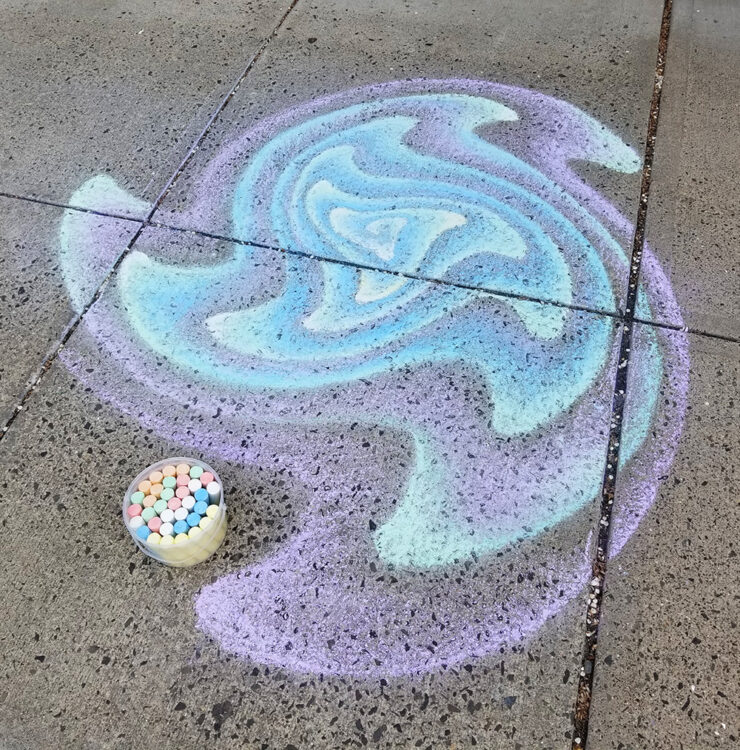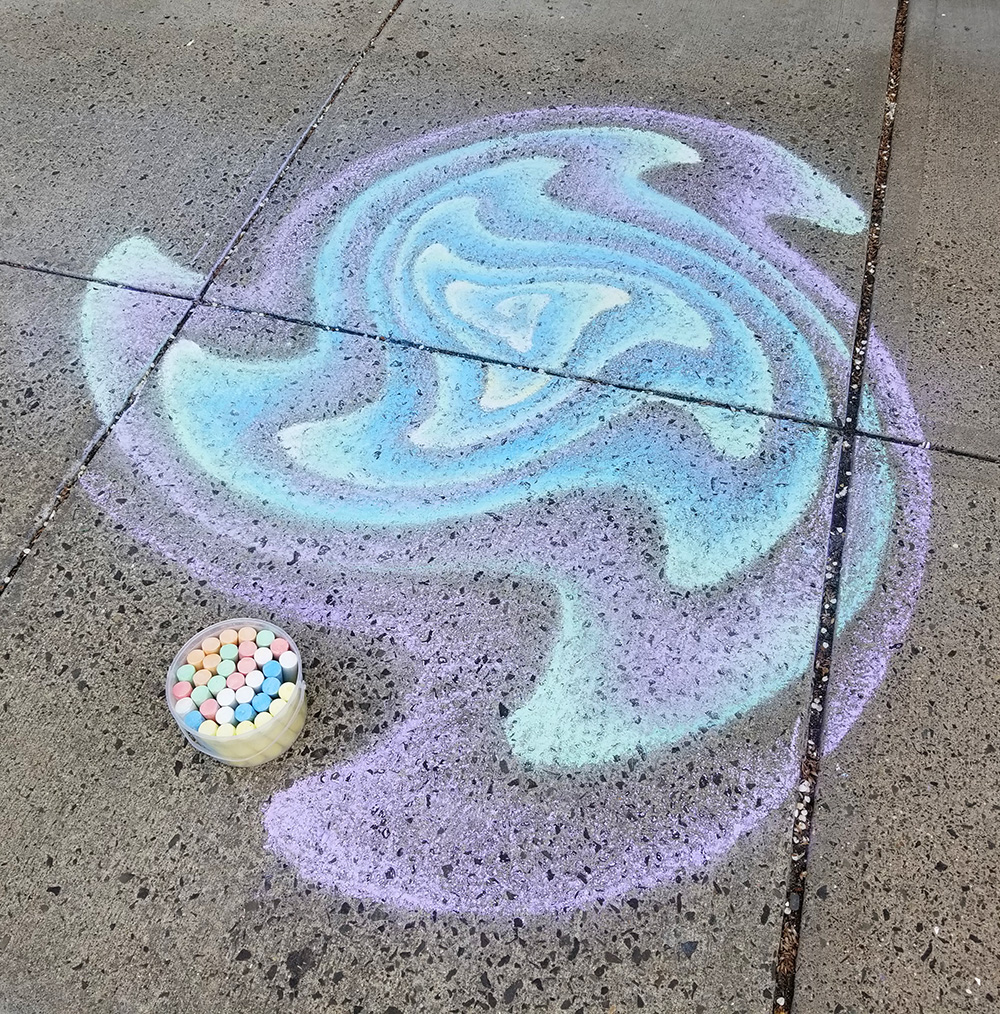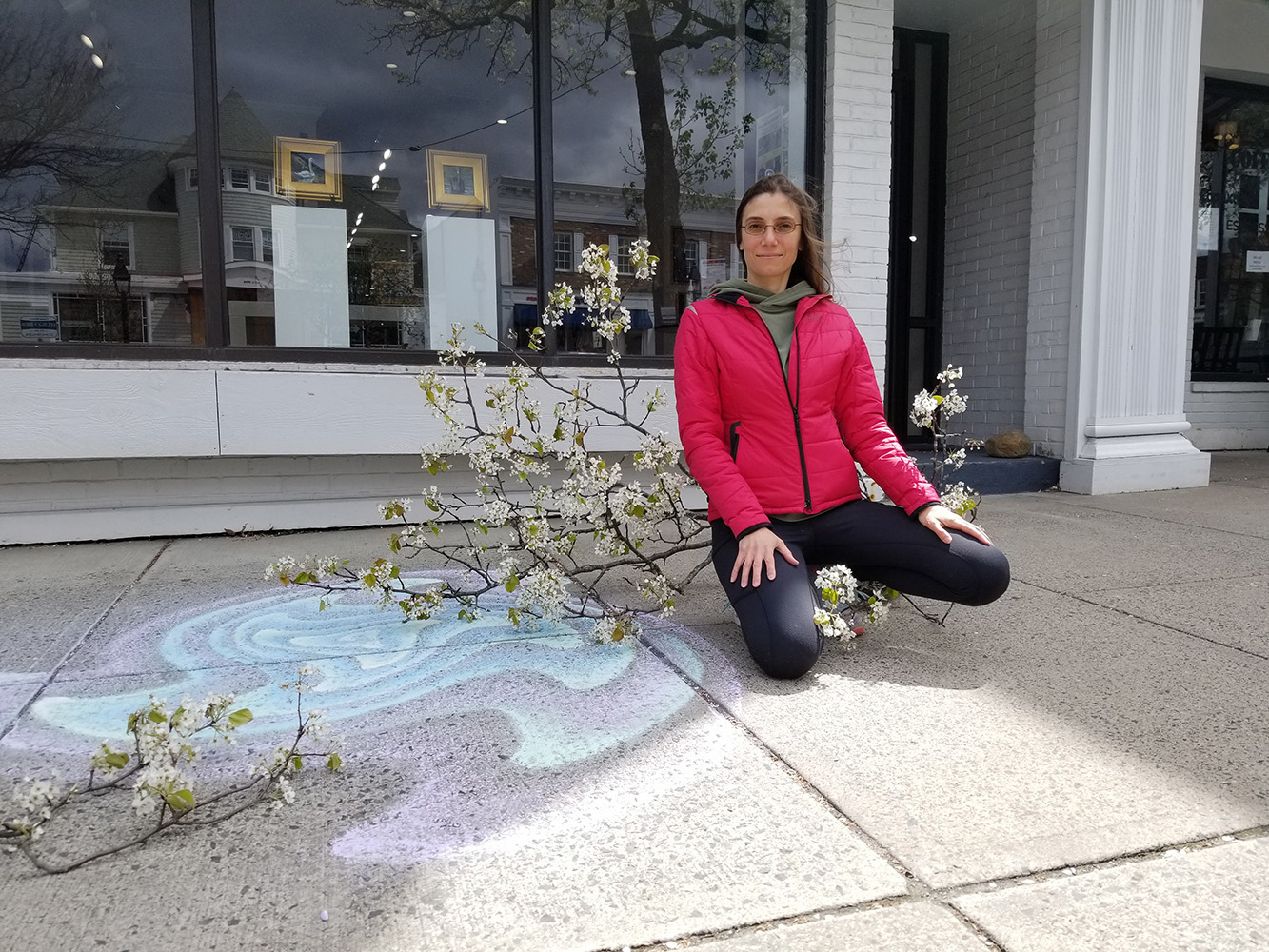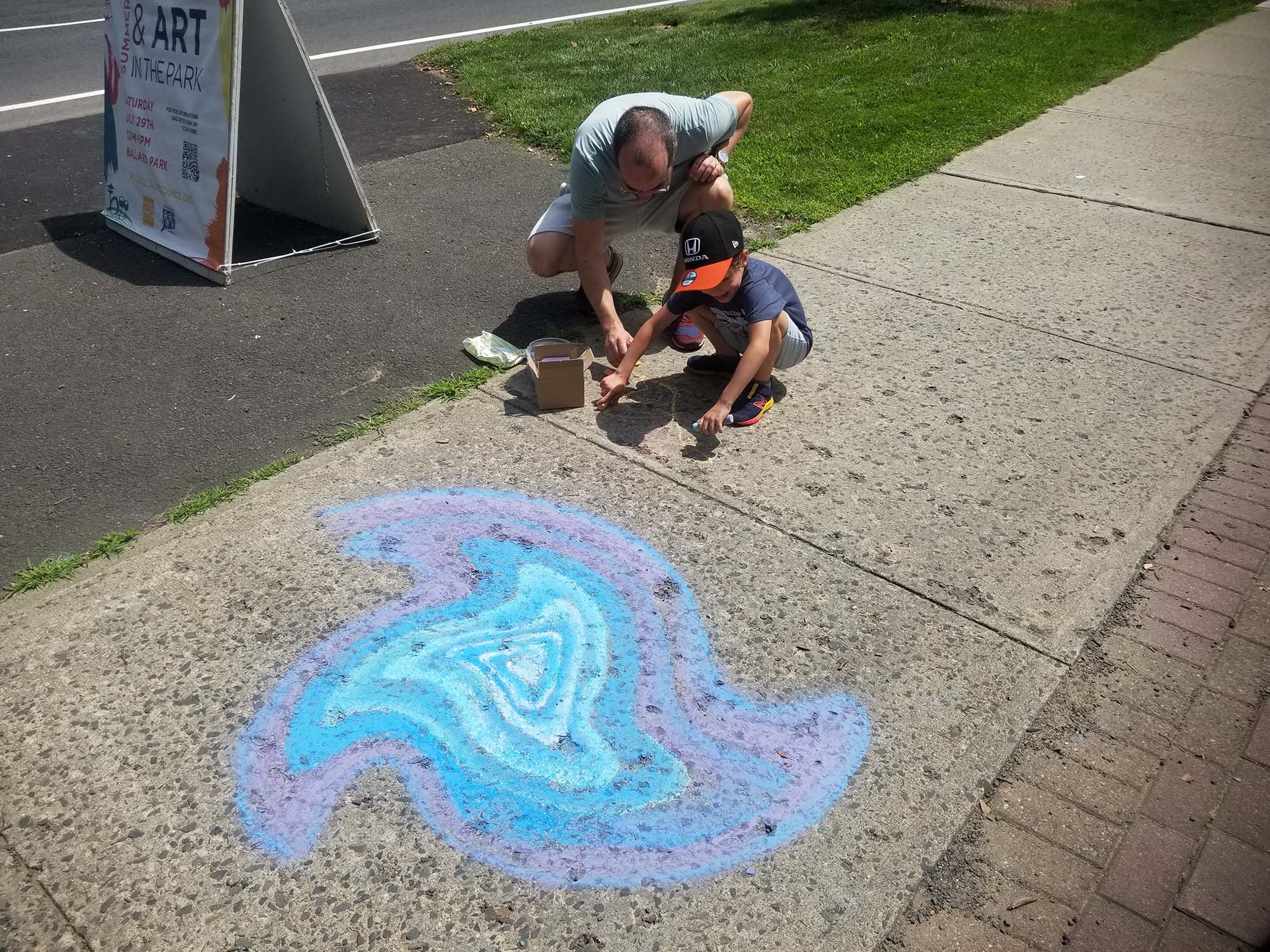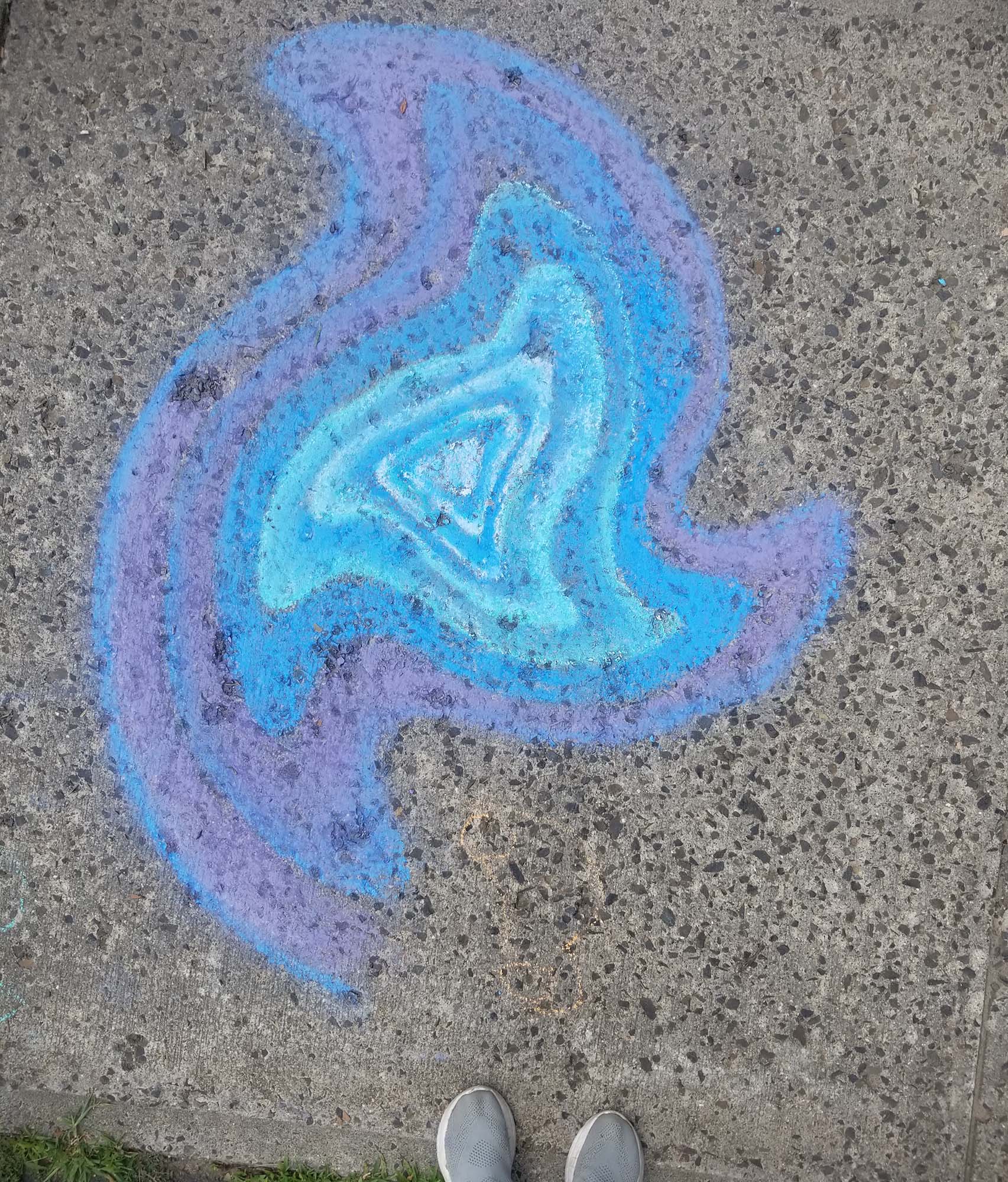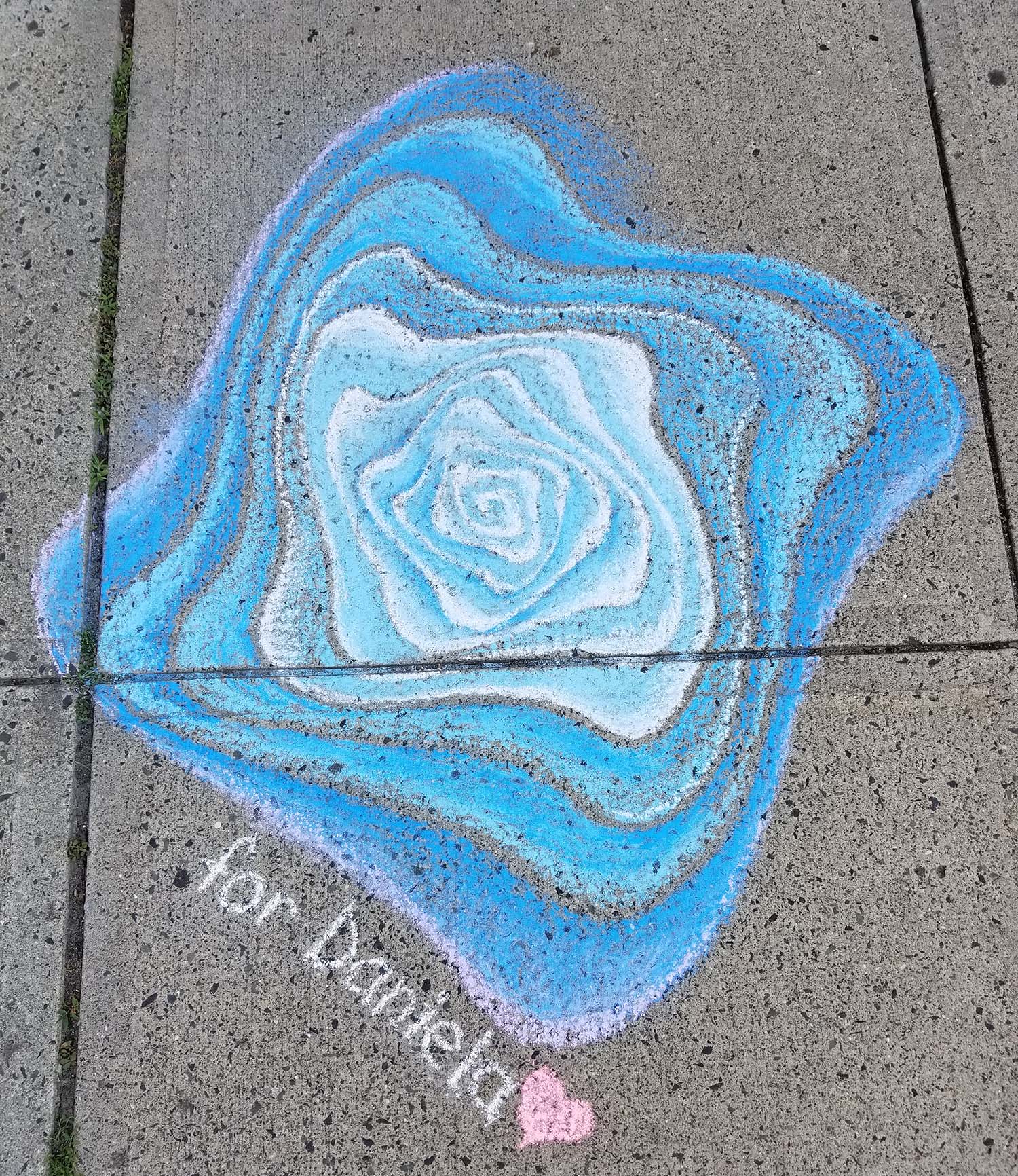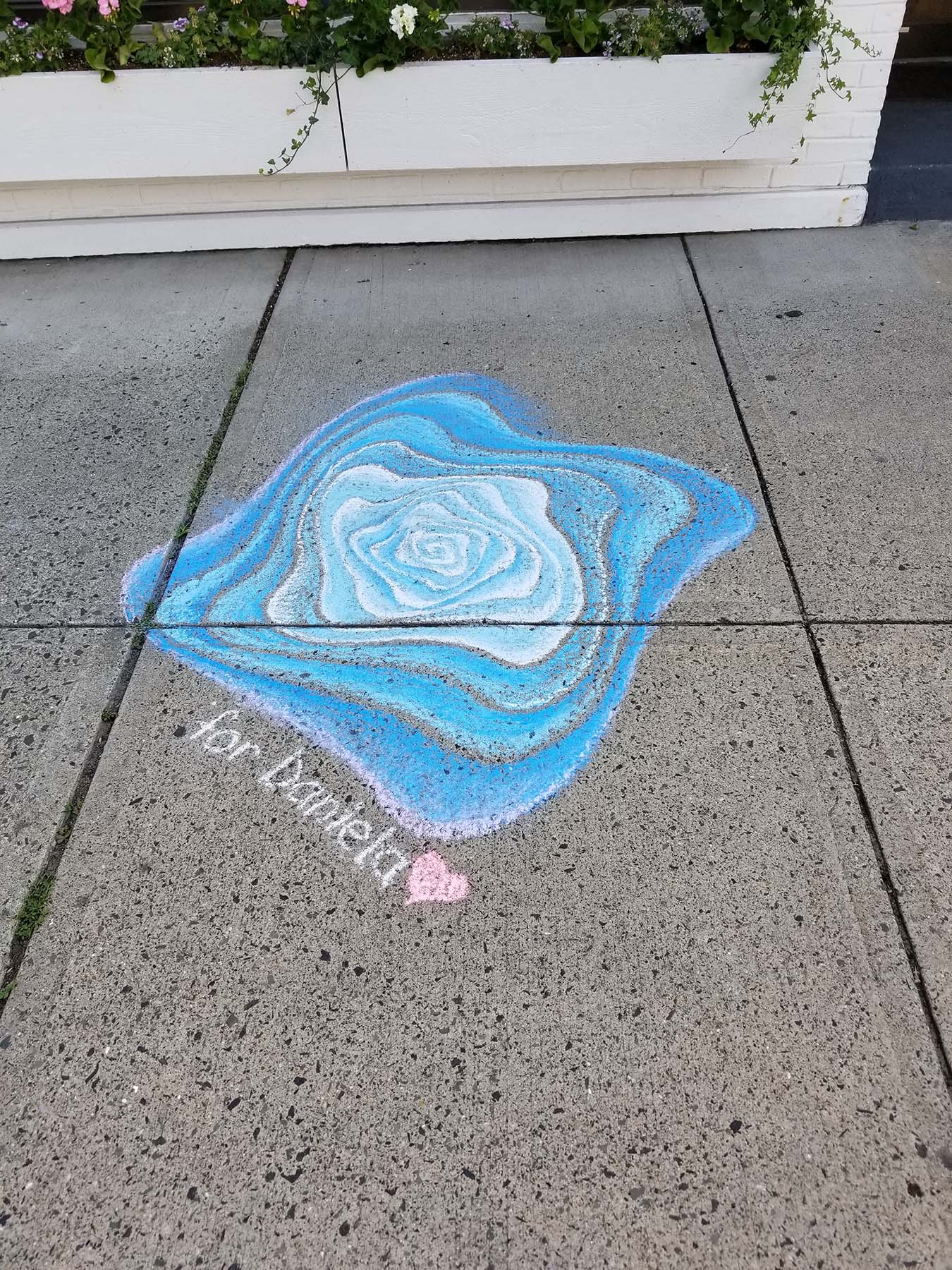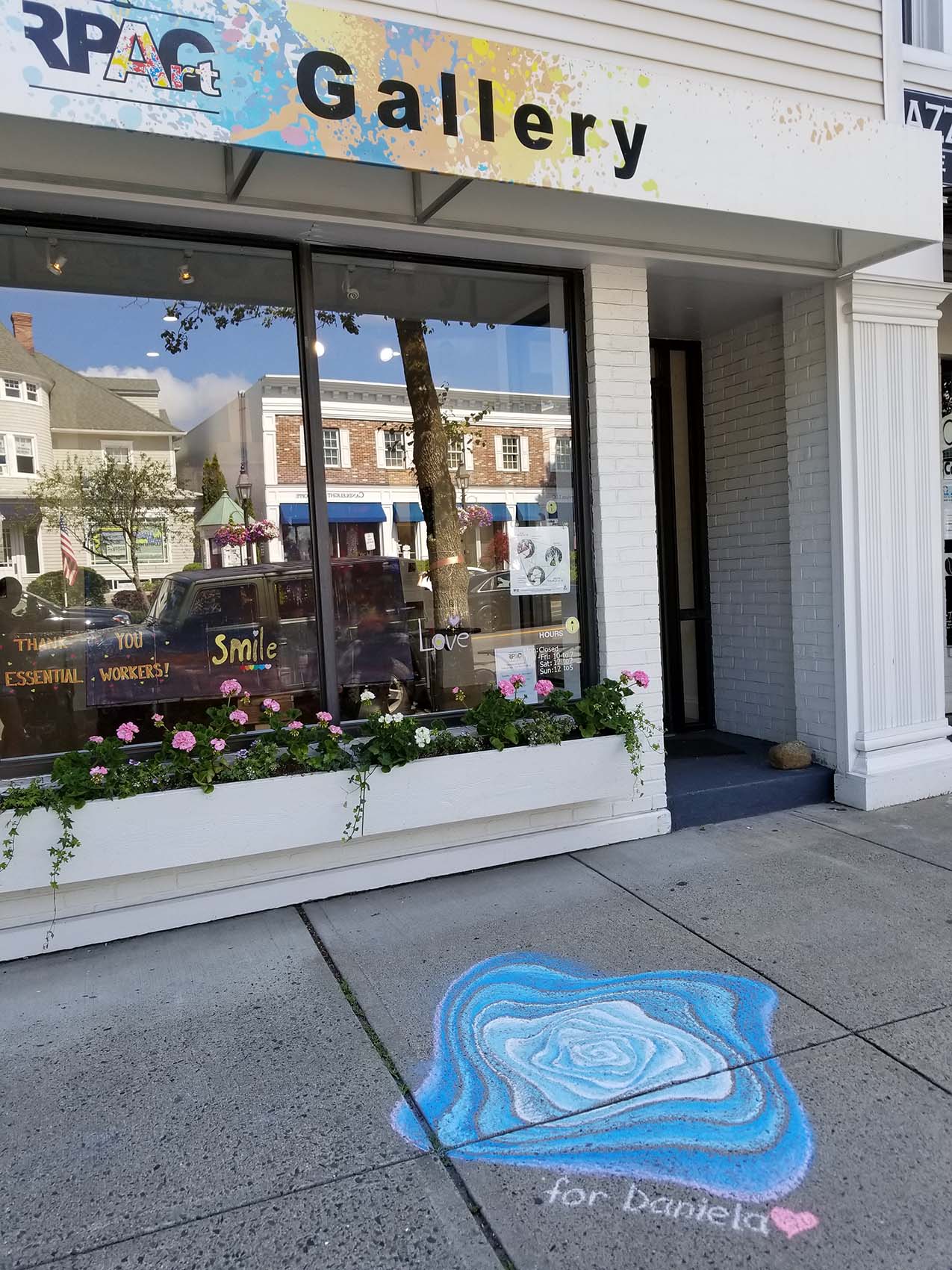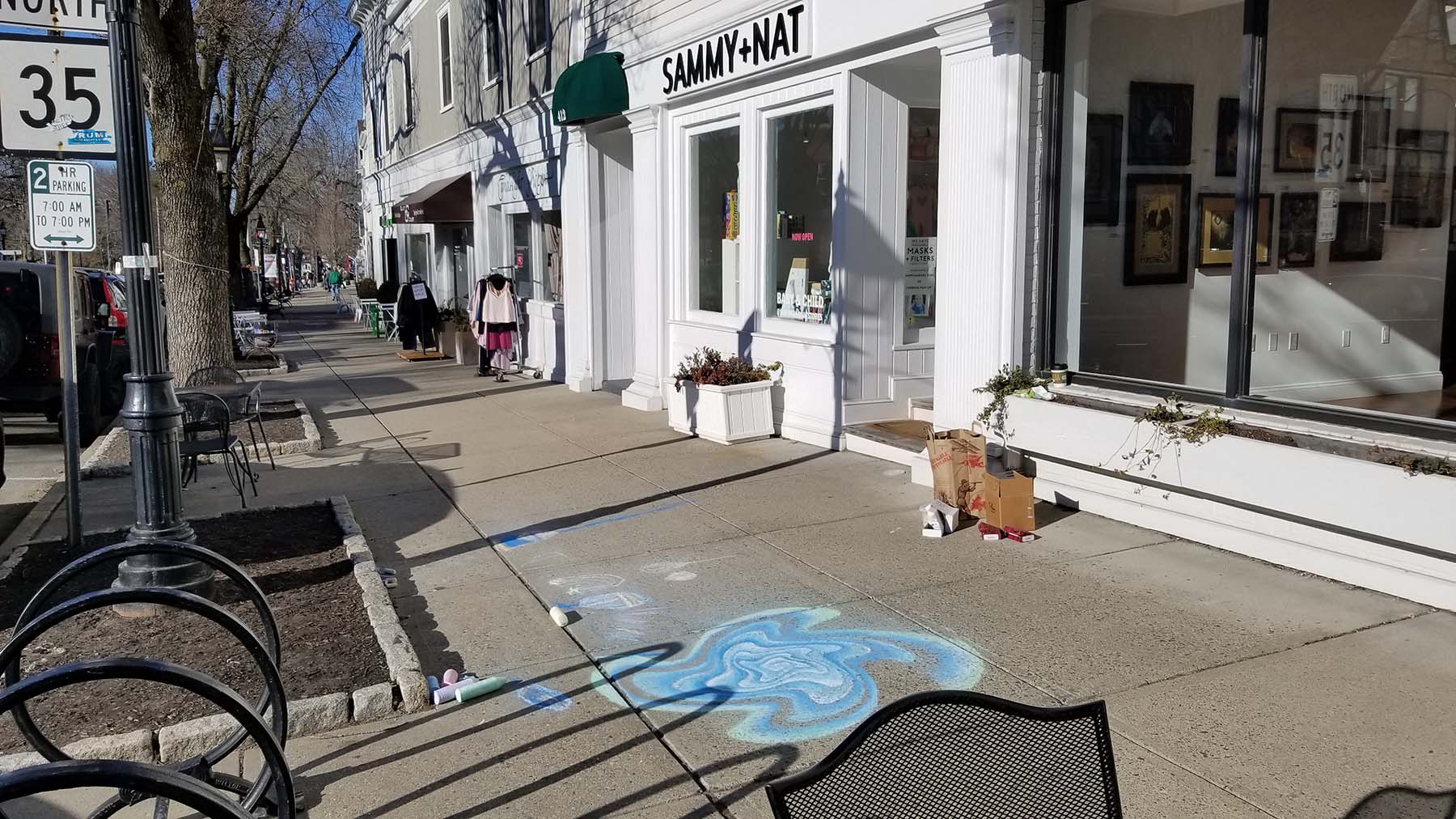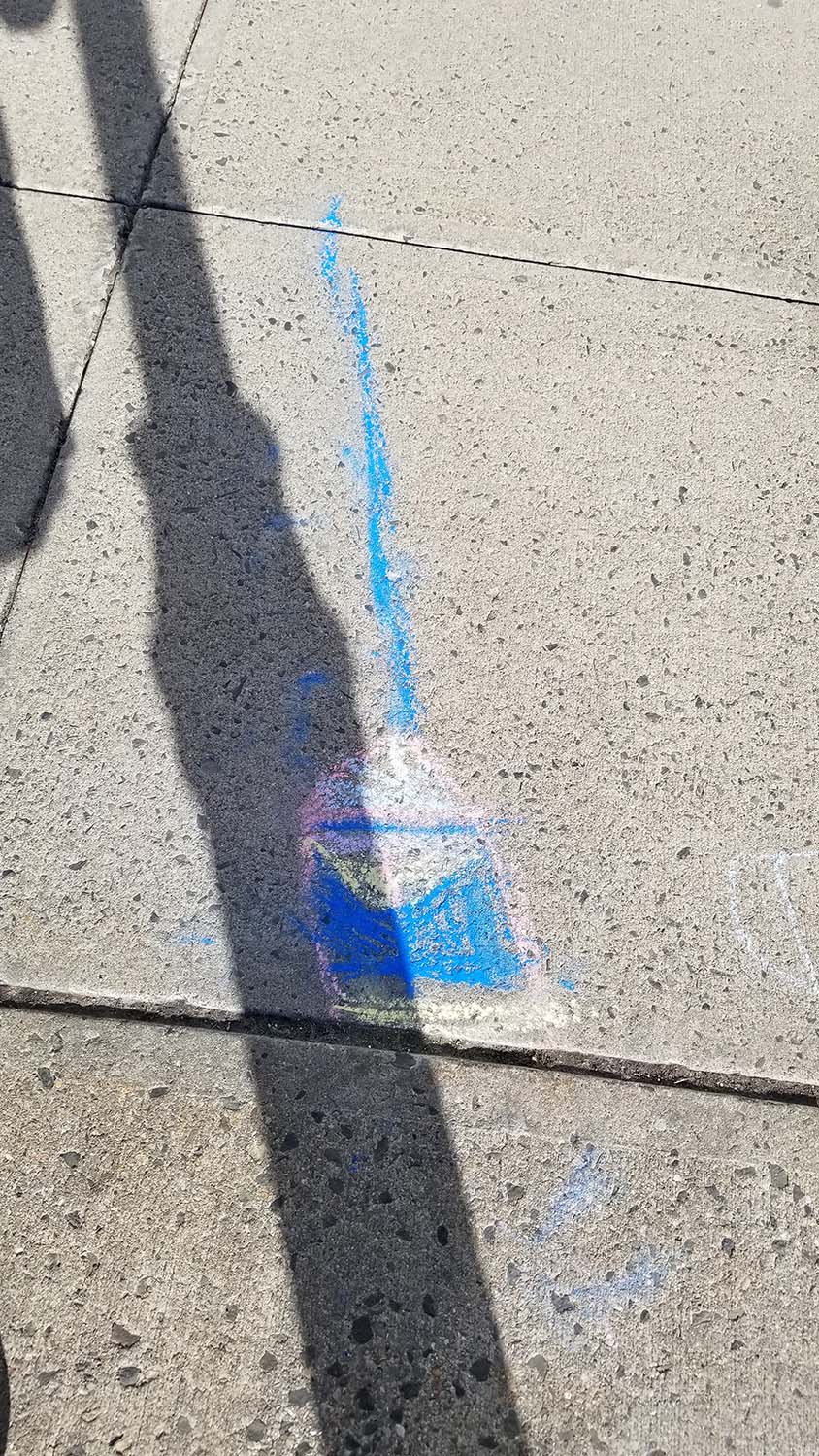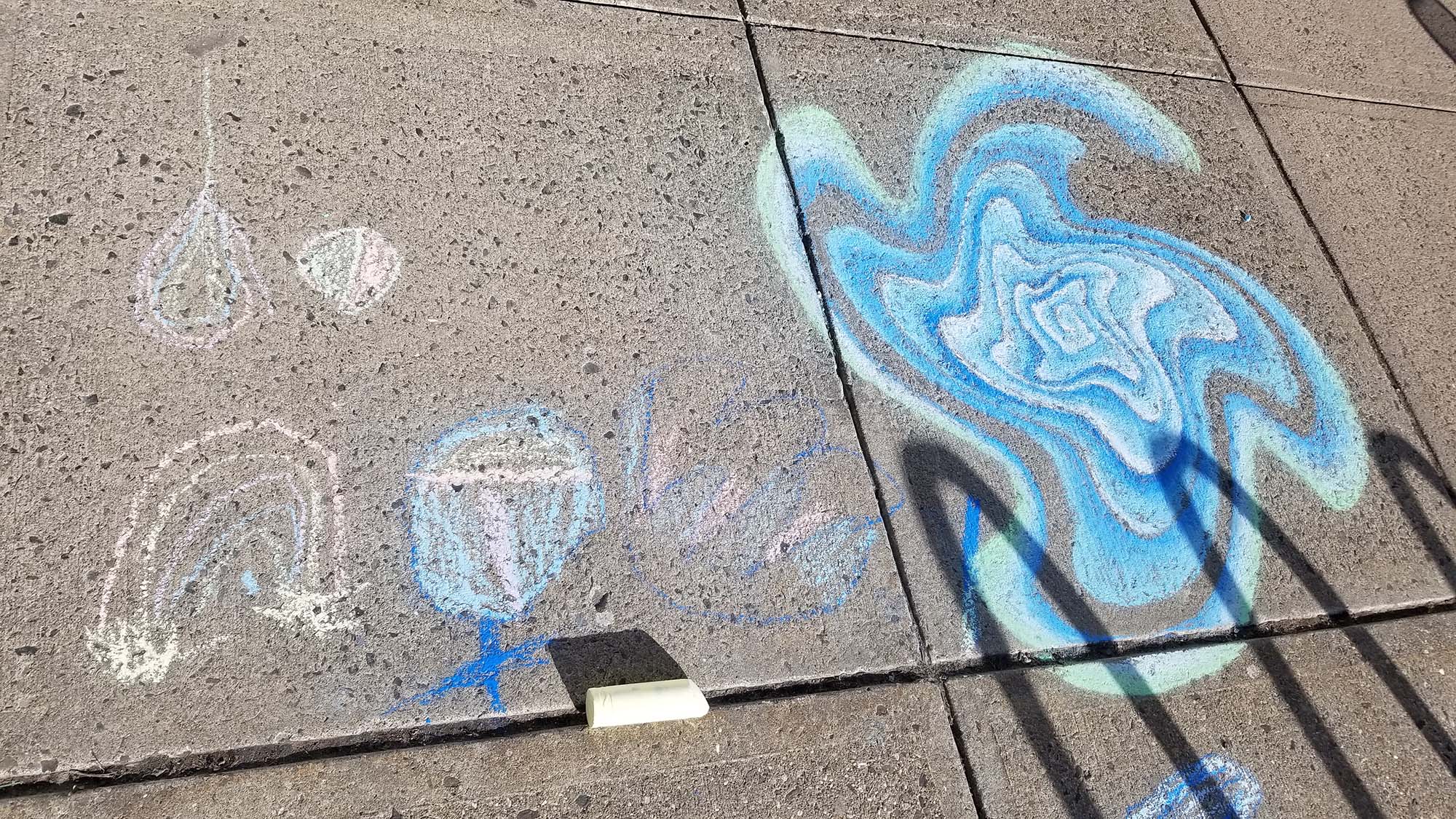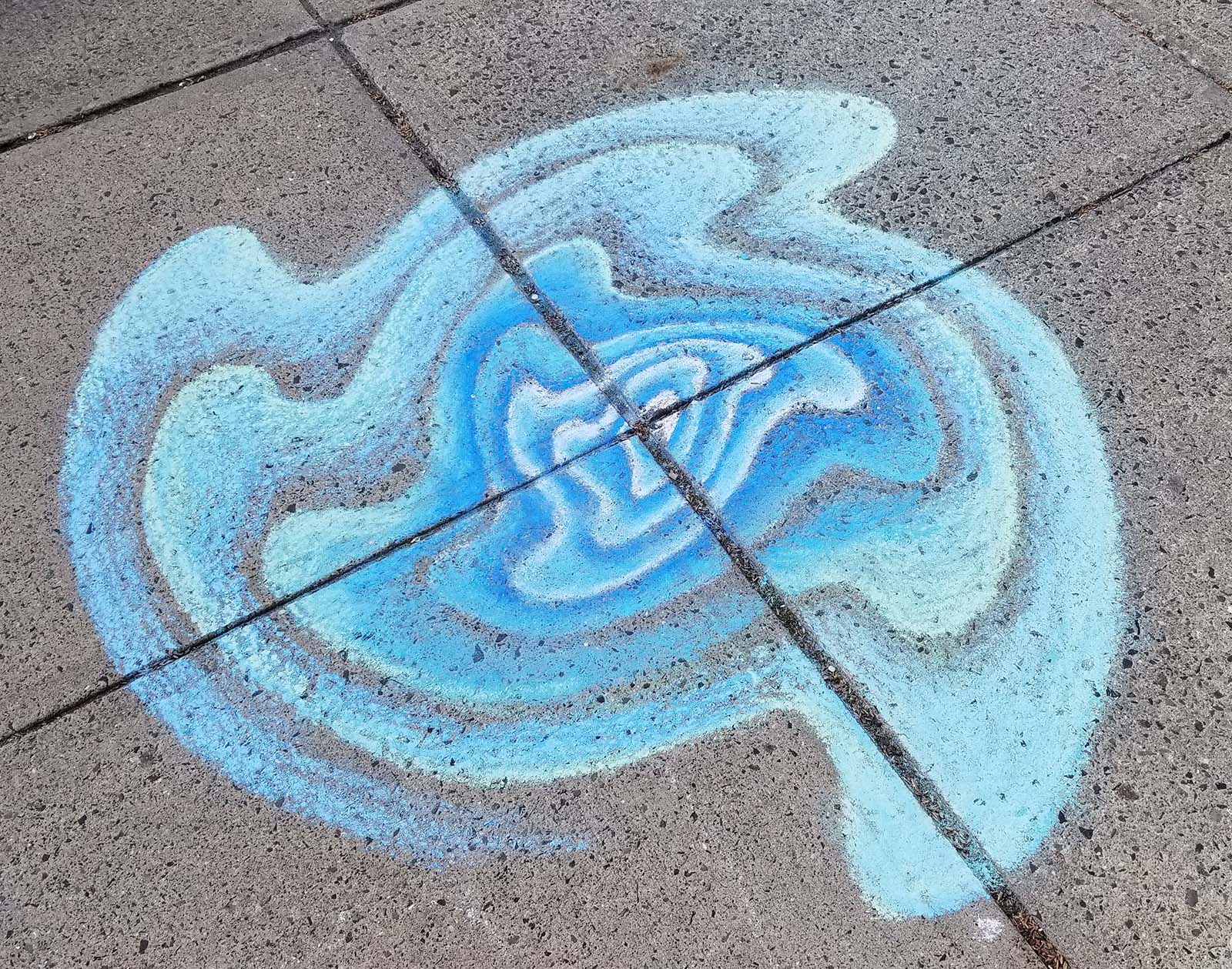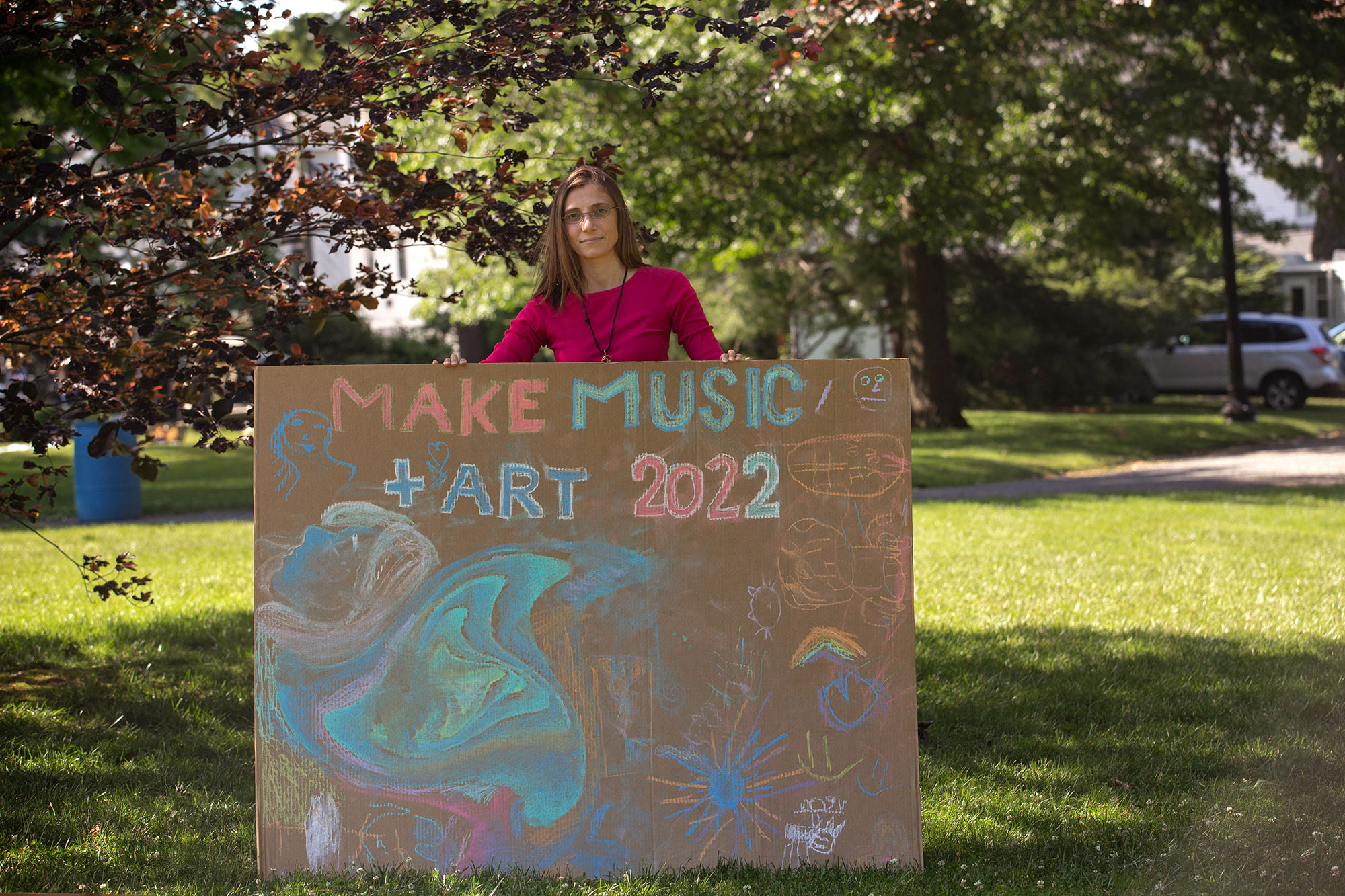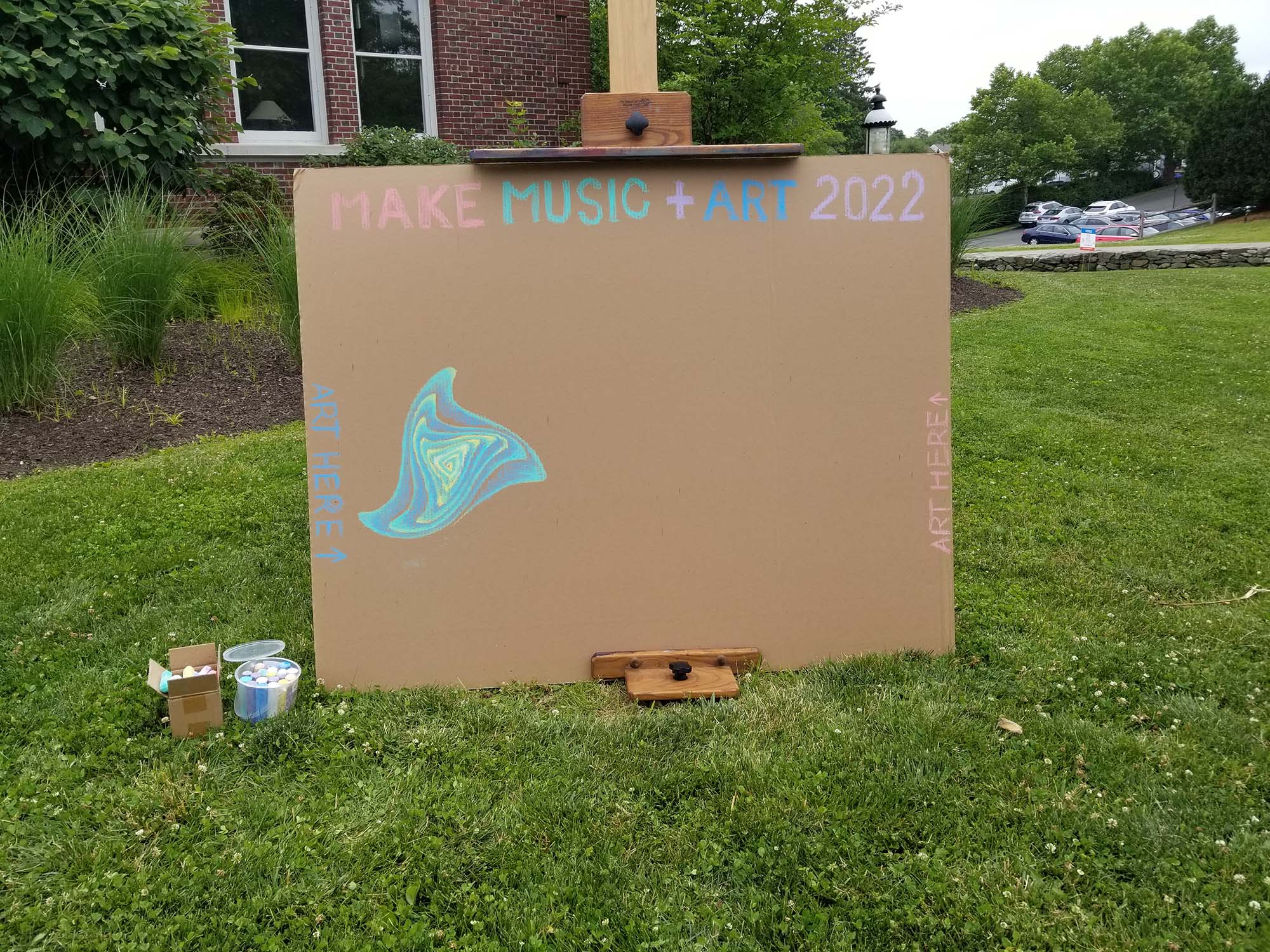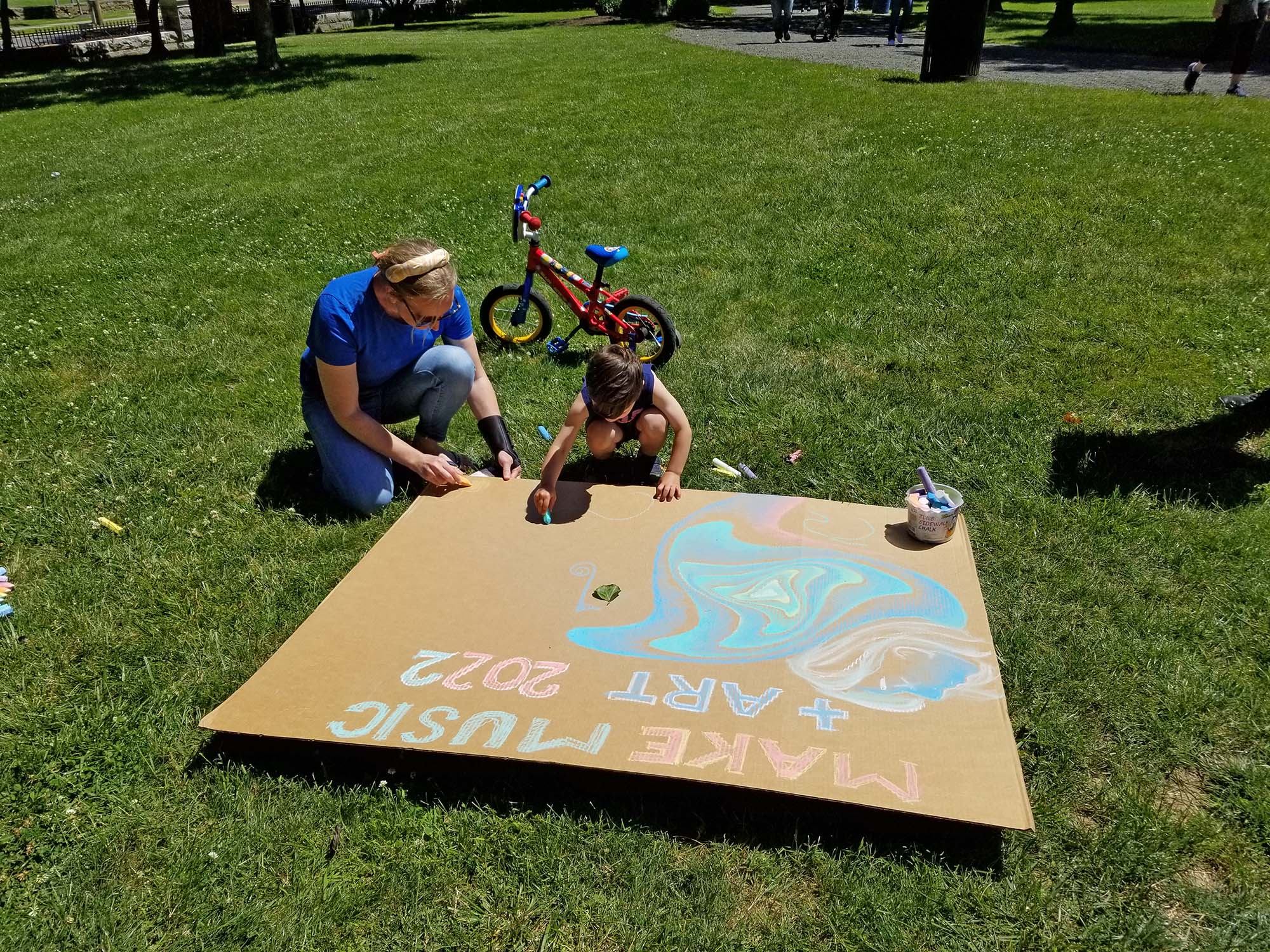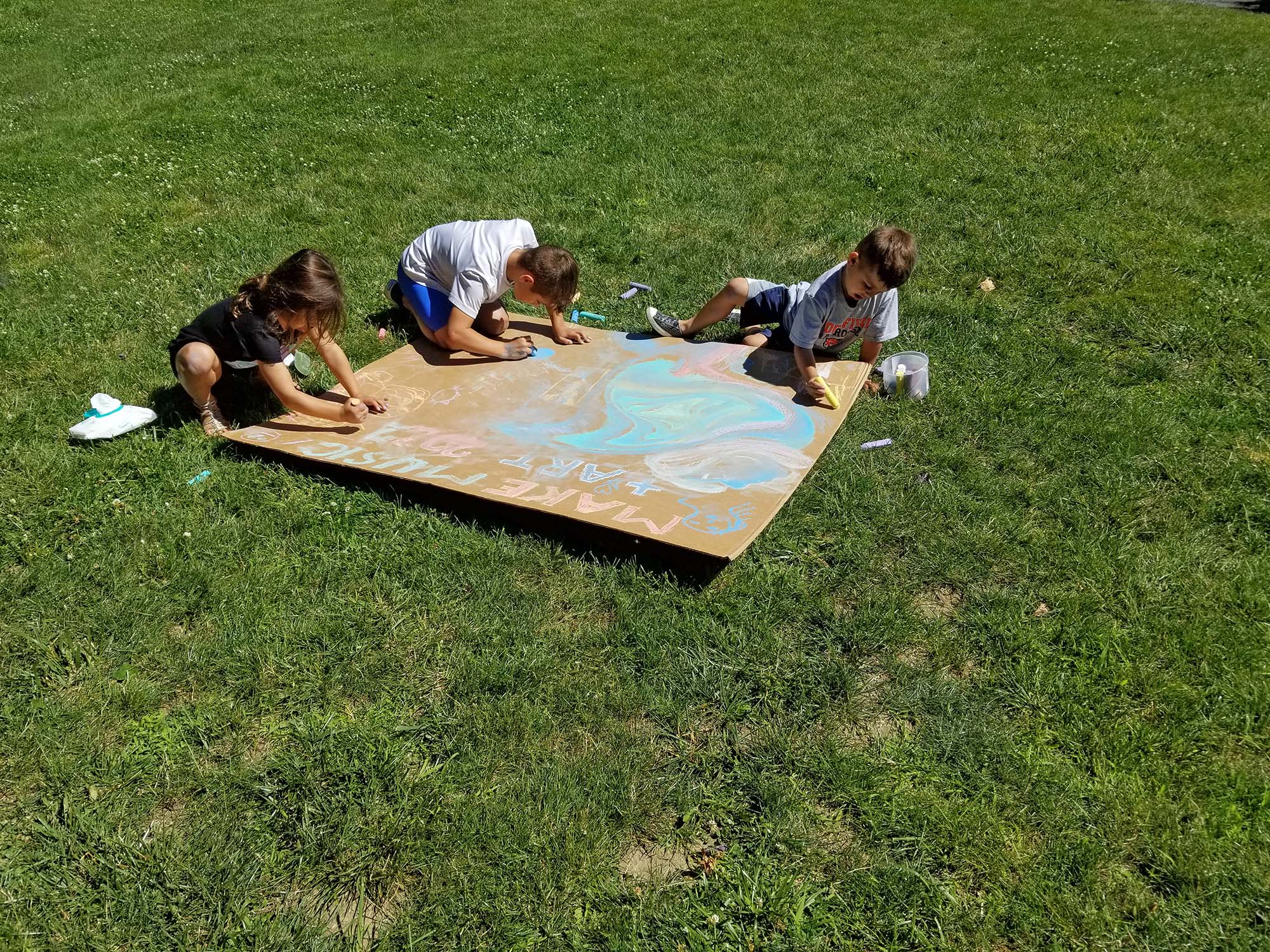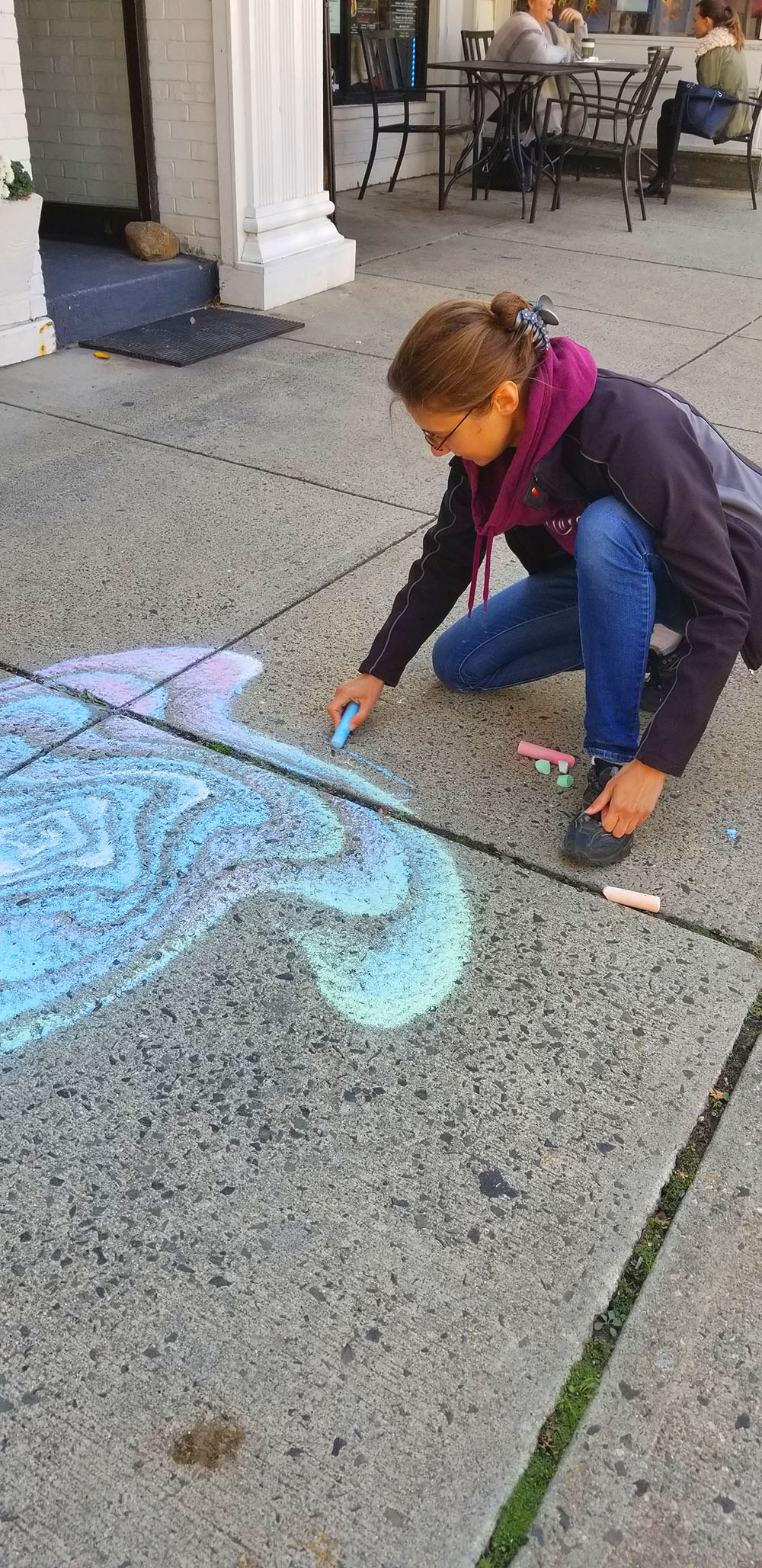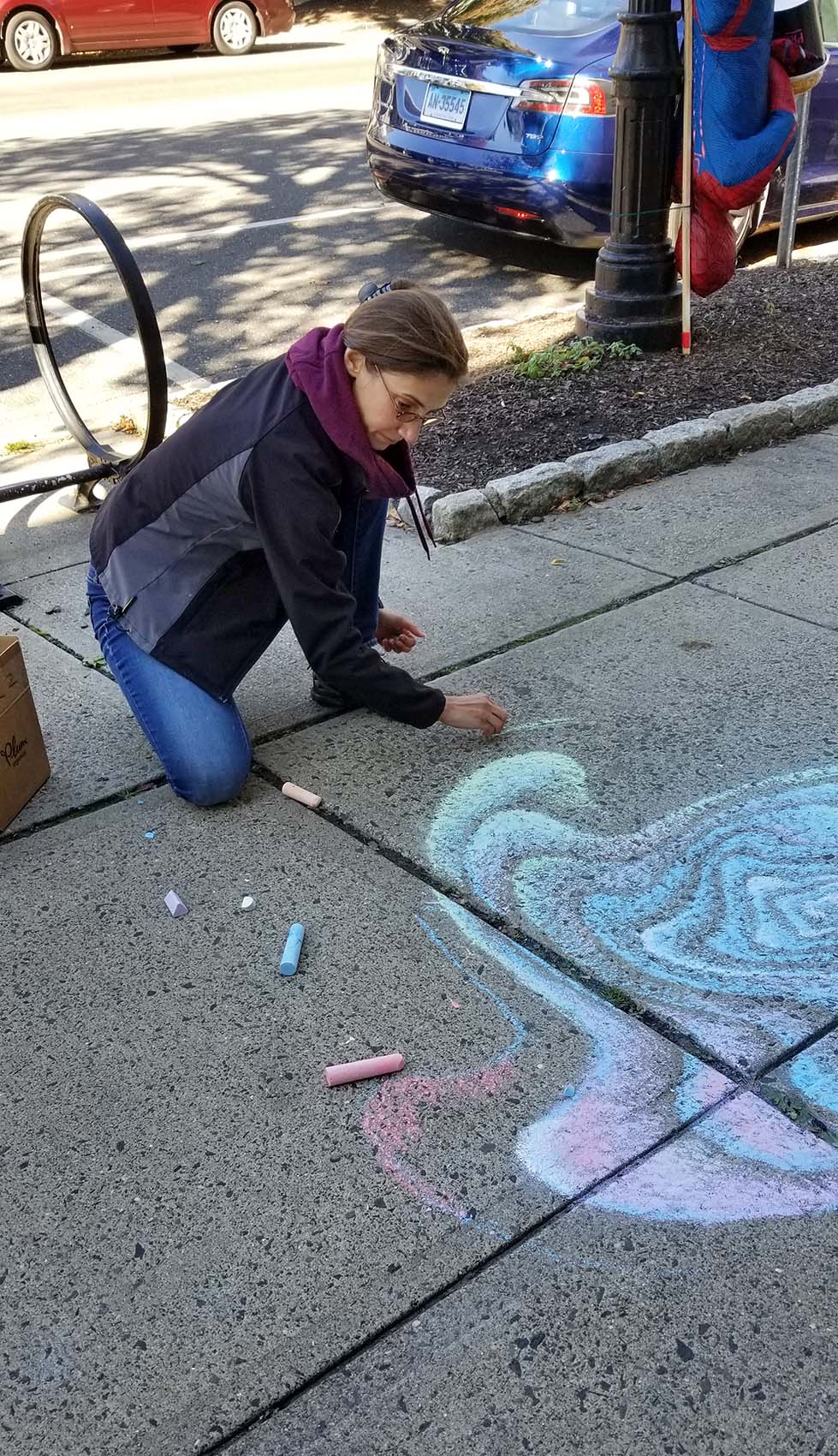Working outdoors engages a wider audience, causing a rift with the established social role of fine art. The ephemeral nature of chalk evokes various emotions in a western society groomed on art’s timelessness. It allows the public to see the process, participate in it, and to experience its inevitable loss. The passers-by often express both admiration and regret over the piece’s natural process of decay, and implicit recognition of its value ensues. Such regret is never associated with, say, a musical or theatrical performance, where the direct experience of the audience is enough. The chalk pieces can be ever renewed and ever unique, like the natural beauty of the passing seasons, or a musical performance, or a dance.
Unknowingly, the details of the process gradually fell in with the longest tradition of art made by women, the kōlam. Early morning proves best both scheduling-wise and because of lighter foot traffic. Practiced for centuries in India, the kōlam are drawn by women in India each morning, by drizzling rice flour on the ground, always in symmetrical geometric abstract forms, in front of homes and businesses. The kōlam are gifts to nature. Gifts to the ants who carry away the flour, gradually destroying the image. They are visual prayers, and are walked over all day every day, and gone by day’s end. Much like them, the chalk drawings celebrate both the act of sharing a gift freely with everyone and the ephemeral nature of beauty, no matter how hard we may try to preserve it. In the east, art is not just for looking at – art is intended to do something. Have a daily practice. With internal purpose.
Right:
Summer of 2020
live drawing footage,
Ridgefield, CT
